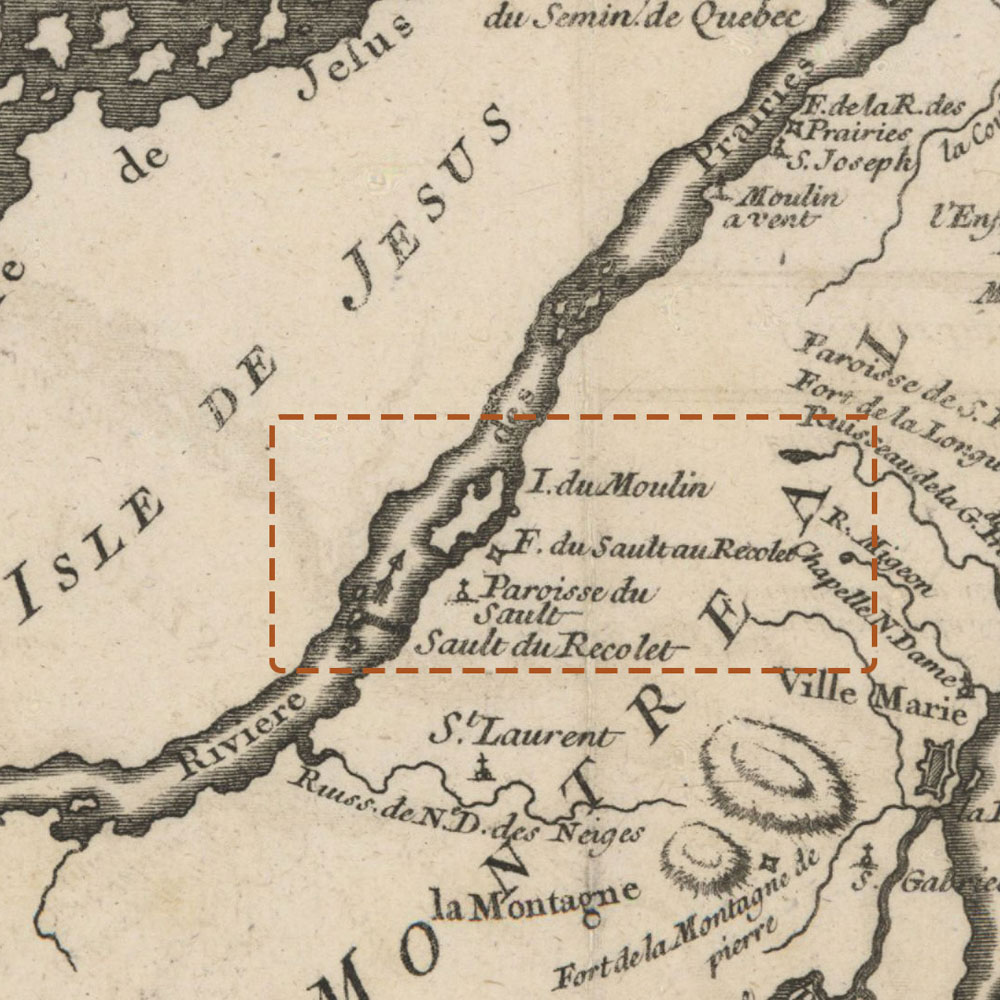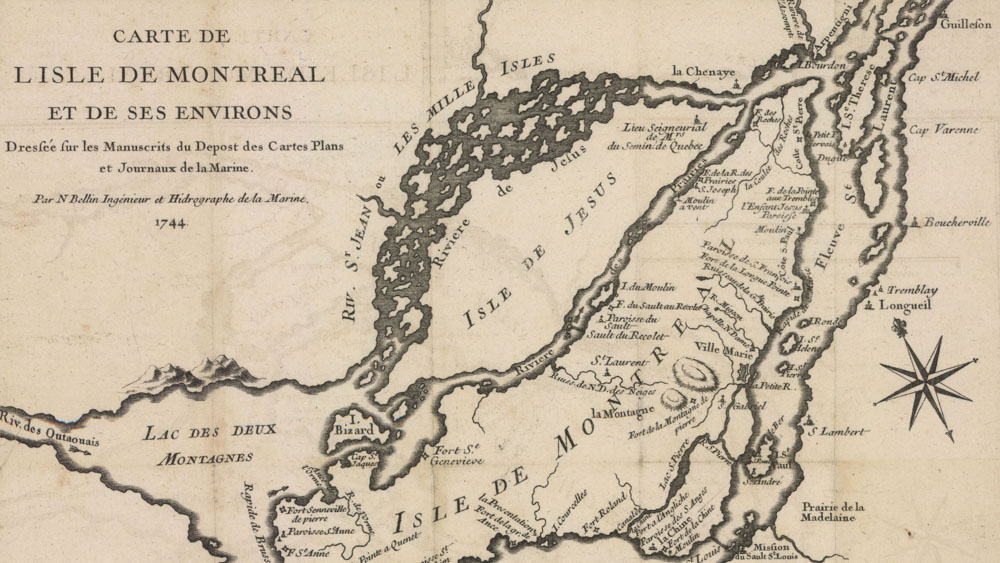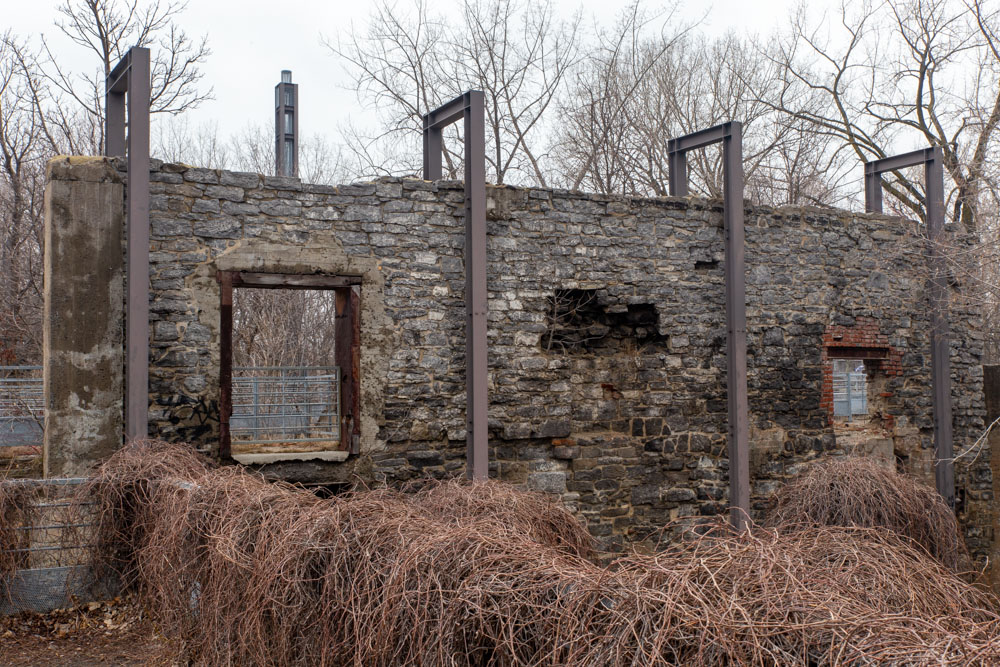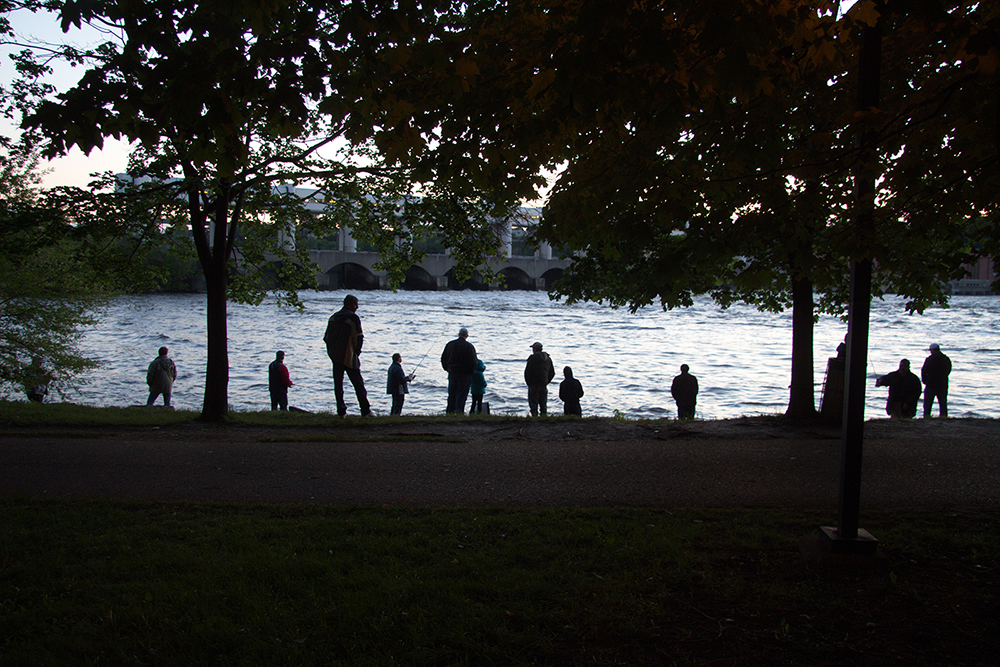A large sculpture of stone, concrete, cast iron and steel
Naturalist Pehr Kalm would be delighted to see the site of the mills today. He would probably make the most out of the nature park, cataloguing every indigenous species of plants and trees. The dike was converted to a belvedere; this inhabited bridge now acts as an interface between the modern city and the picturesque landscapes of La Visitation Island. From it, visitors can enjoy a view of the basin’s quiet waters. Turning away, the vestiges of a bygone era catch their eye.
The river’s current, so tempestuous in Kalm’s days, has now settled. However, the site has retained all its magic, with its sights and sounds constantly stimulating the senses. Open sections of the dike’s causeway reveal the old sluice gate. The torrential rush of the water underfoot evokes the river’s raw hydraulic force.
Openings in the stone and concrete walls act as windows into the past of what was surely a bustling mill. Below, steel turbines appear frozen within the river’s flow. Visitors then enter a huge sculpture of stone, concrete, cast iron and steel, walking about on its wooden and metal platforms.

La Visitation Island, the first mills, Fort Lorette and the chapel of the missionary outpost in the early days of Sault-au-Récollet, about twenty years after the departure of the Indigenous populations for Kanesatà:ke.

A general view of the Montreal archipelago, on this 1744 map of the Island of Montreal, by Nicolas Bellin.
Modern additions insert themselves seamlessly among the vestiges. Colonnades of climbing vines modulate the interior space. Long sections of steel—shadows of the industrial past—emerge here and there from the ruins. Clearly visible from afar, a tall vertical structure acts as a visual landmark, echoing the smokestack of the old factory.
At the end of his walk, Kalm would greet the many passersby; their smiling faces a telltale sign of their connection to this place. Although these days the mills in Sault-au-Récollet no longer produce flour, nails or fibreboard, they now produce intangible, essential things, like a taste for discovery, well-being and growth.
Come and take a video tour of the Mills site today.
Video with transcript (EN). Subtitles available in English and French.



